This article was medically reviewed by Luba Lee, FNP-BC, MS. Luba Lee, FNP-BC is a Board-Certified Family Nurse Practitioner (FNP) and educator in Tennessee with over a decade of clinical experience. Luba has certifications in Pediatric Advanced Life Support (PALS), Emergency Medicine, Advanced Cardiac Life Support (ACLS), Team Building, and Critical Care Nursing. She received her Master of Science in Nursing (MSN) from the University of Tennessee in 2006.
There are 13 references cited in this article, which can be found at the bottom of the page.
This article has been viewed 175,879 times.
A swollen toe is never a fun ailment to deal with. There are a lot of different potential causes of toe swelling, so there’s no single cure-all for a swollen digit. Luckily, once you’ve determined what’s causing your toe to swell, it’s relatively easy to go about treating it on your own. However, if the pain persists for a long time–or if you suspect that you might have a fracture, or a serious condition like gout–be sure to see a doctor as soon as possible.
Steps
Determining the Cause of Your Swollen Toe
-
1Note if your toe was recently struck or had something fall on it. A recent sports injury or traumatic contact might have led to your toe being fractured. With a fractured toe, the swelling will probably be accompanied by persistent, throbbing pain.[1]
- A fractured toe or a toe that was recently struck may also be visibly bruised, with a dark blue or purplish color.
- If you were recently involved in a car accident, you may well have a fractured toe.
-
2Look for red, painful swelling along the side of your toenail. This would indicate that the swelling is being caused by an ingrown toenail. Your toe may also be red and painful, with the toenail seeming to disappear into the skin of your toe.[2]
- Ingrown toenails are most common on the big toe, although they can occur on any digit.
- You may also see your toenail curling into your toe.
- Ingrown toenails are usually caused by cutting your nails too short, too long, or just improperly.
Advertisement -
3Check for a bulging bump on the base of your toe near the joint. If this bump is accompanied by intermittent pain, it may be a bunion. Look for swelling and soreness around your toe joint as well.[3]
- Wearing tight, narrow shoes that push your big toe into your next toe is a common cause of bunions. If you normally wear tight shoes, this may be what’s causing your toe to swell.
-
4Be on the lookout for sudden, acute pain in a swollen toe. If the pain seems to come out of nowhere, this may be a symptom of a gout attack. Gout is a very painful form of arthritis that normally occurs on your big toe. It's caused by an excess of uric acid in the body, and if you suspect that you have it, you should see a doctor as soon as possible.[4]
- You’re more likely to develop gout if you eat a diet rich in meat and seafood; consume large quantities of alcohol regularly; are overweight; or have a family history of gout.
- If you develop gout in one of your toe joints, the skin around that joint may also become red and shiny. However, this is not always the case.
- Your toe may also feel stiff and a little bit hot to the touch.
-
5Take note if you begin to feel pain or swelling in the ball of your foot. This could be a sign of capsulitis of the second toe, a condition that causes the ligaments surrounding the joint near your second toe to become inflamed. In addition to swelling at the base of this toe, it may also feel like there’s a marble or pebble under the ball of your foot when you walk.[5]
- The main cause of capsulitis is just having abnormal foot mechanics that are typically the result of how your foot is shaped. For example, when your foot is shaped so that excess pressure is placed on the ball of your foot, this can lead to capsulitis.
- Watch out that you don't incorrectly diagnose your toe pain as capsulitis. Turf toe, also known as soccer toe, can feel similarly uncomfortable in a nearly identical location. You should consider scheduling an appointment with a medical professional if you suspect one of these injuries is the cause of your pain.
-
6Ask your doctor about nail fungus if your nails are thickened or discolored. Sometimes, a severe fungal infection of the toenails can spread into the surrounding skin, causing swelling and tenderness.[6] If the skin around your nails is swollen and red, check for other telltale symptoms of toenail fungus, such as thickening of the nails, white or yellowish discoloration, brittle or crumbling nails, and an unpleasant smell.[7]
- Some common risk factors for toenail fungus infections include wearing tight shoes that create a warm, sweaty environment around your toes; wearing heavy toenail polish; and walking barefoot in a shared locker room or bathroom.
- If the infection has spread beyond the nail itself, your doctor may prescribe a combination of antibiotics and antifungal medications to treat it.
Giving Your Toe the Right Treatment
-
1Take over-the-counter pain medications to help deal with the pain. Nearly every cause of a swollen toe can be partially treated, or at least managed, with over-the-counter pain medication. However, do not take these medicines for more than a few days unless advised to by your doctor.[8]
- For best results, take anti-inflammatory pain medication such as aspirin or ibuprofen.
- Over-the-counter medications should not be used as a substitute for professional treatment. If the pain from your toe doesn’t dissipate after a few days, see a doctor for a more thorough treatment plan.
-
2See a doctor as soon as possible if your toe is fractured. You may need to have a cast placed on it in order for it to heal properly. Otherwise, keep your foot elevated and avoid putting pressure on it as much as you can.[9]
- You can also apply ice to the area for 20 minutes at a time to deal with the pain. Wait at least 1 hour before applying the ice again.
- Be sure to wrap the ice in a towel to avoid applying it directly to your skin.
- Fractured toes typically heal within 4-6 weeks.
-
3Soak your foot 3-4 times a day if you have an ingrown toenail. Prepare a foot bath using warm water and 1-2 tablespoons of unscented Epsom salt. Soak your foot for about 15 minutes, then completely dry it once you remove it. This will soften the skin around your nail and help stop the nail from growing into it.[10]
- Do not try to cut the nail! Just let it grow out on its own. This should take about 1-2 weeks.
- If you see pus emerging from your toe, see a doctor as soon as possible. This is a sign that your toenail may be infected.
-
4Switch to more comfortable shoes to deal with a bunion or capsulitis. Wear roomier shoes, with padding around your toe joints, that put less pressure on your toes and the ball of your foot. If possible, avoid doing strenuous activities that may also put pressure on your toes.[11] High heels can put additional strain on the toes and feet, so limit wearing them as much as possible.[12]
- If you have capsulitis, apply ice to the ball of your foot to reduce the swelling. Wrap the ice in a towel and apply it to the swollen area for 20 minutes at a time. Wait at least 1 hour before applying the ice again.
- It may also be necessary to tape or splint your second toe in severe cases of capsulitis. Talk to your doctor to see if this is necessary for your condition.
- See a doctor for either of these conditions if the pain doesn’t go away with at-home treatments after a few days or begins to interfere with your daily life.
-
5Make diet and lifestyle changes to help manage gout. Gout attacks can be prevented, or at least made less frequent, by making changes that lower the amount of uric acid in your body. Avoid foods with high levels of purine, drink plenty of water every day, follow a balanced diet, and do moderate exercise on a regular basis.[13]
- If you’re experiencing a gout attack, it should take about 3 days for your symptoms to significantly improve with treatment.
- Gout can be a serious ailment to deal with that requires special treatment. If you think you may have gout, be sure to see a doctor as soon as possible to confirm the diagnosis and come up with a specific treatment plan.
- You can also take medication to lower the amount of uric acid in your body. Some commonly prescribed medications include allopurinol, febuxostat, and benzbromarone.
-
6Try essential oil foot baths to reduce inflammation. Some essential oils may help reduce swelling and pain associated with conditions that can affect the toes, such as rheumatoid arthritis. Mix a few drops of an anti-inflammatory essential oil into your favorite bath salts or mix them directly into warm bath water, and soak your swollen toe for 15-20 minutes. Some potentially helpful essential oils include:[14]
- Eucalyptus
- Frankincense
- Ginger
- Lavender
- Evening primrose
- Turmeric
- Basil
-
7Use over-the-counter or prescribed medication to treat fungus. If OTC antifungal cream doesn’t effectively treat your infection within 3-6 weeks, visit your doctor to have a stronger medication prescribed to you. Toenail fungus is usually treated with antifungal medication taken orally or applied topically as a cream. These medications typically take 6 to 12 weeks to fully treat the fungal infection.[15]
- If you’re self-conscious about the way that your infected toenail looks, ask your doctor if you can be prescribed a medicated toenail polish.
Warnings
- If you experience chronic swelling and pain in your toes, see a doctor to determine the cause of it and make sure you’re performing the right treatment for it.⧼thumbs_response⧽
References
- ↑ https://www.mayoclinic.org/diseases-conditions/broken-toe/diagnosis-treatment/drc-20370468
- ↑ https://www.nhs.uk/conditions/ingrown-toenail/
- ↑ https://www.mayoclinic.org/diseases-conditions/bunions/symptoms-causes/syc-20354799
- ↑ https://www.nhsinform.scot/illnesses-and-conditions/muscle-bone-and-joints/conditions/gout#symptoms-of-gout
- ↑ https://www.foothealthfacts.org/conditions/capsulitis-of-the-second-toe
- ↑ https://www.everydayhealth.com/hs/toenail-fungal-infection-guide/dangers-of-ignoring-toenail-fungal-infections/
- ↑ https://www.mayoclinic.org/diseases-conditions/nail-fungus/symptoms-causes/syc-20353294
- ↑ https://www.mayoclinic.org/symptoms/foot-pain/basics/when-to-see-doctor/sym-20050792
- ↑ https://www.mayoclinic.org/diseases-conditions/broken-toe/diagnosis-treatment/drc-20370468
- ↑ https://intermountainhealthcare.org/blogs/topics/live-well/2018/06/caring-for-an-infected-or-ingrown-toenail/
- ↑ https://www.mayoclinic.org/diseases-conditions/bunions/symptoms-causes/syc-20354799
- ↑ https://www.health.harvard.edu/a_to_z/mortons-neuroma-a-to-z
- ↑ https://www.nhsinform.scot/illnesses-and-conditions/muscle-bone-and-joints/conditions/gout#treating-gout
- ↑ https://www.medicalnewstoday.com/articles/321853.php
- ↑ https://www.mayoclinic.org/diseases-conditions/nail-fungus/diagnosis-treatment/drc-20353300

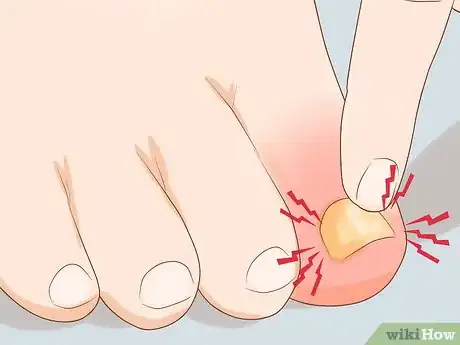
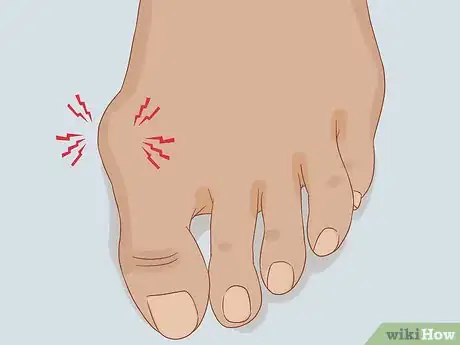

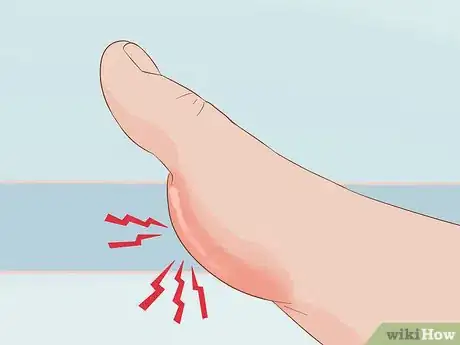
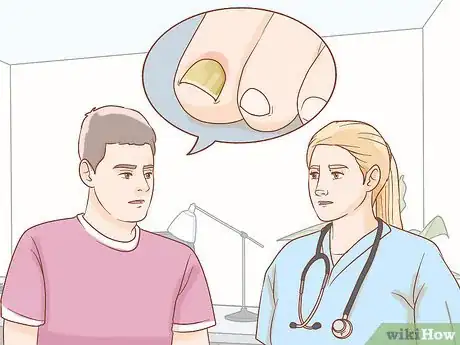

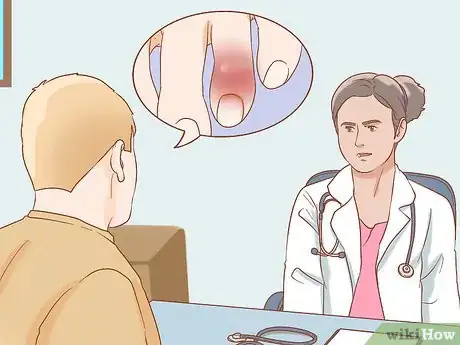





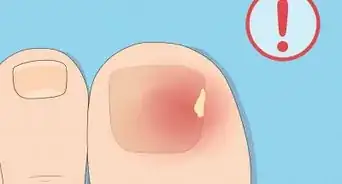


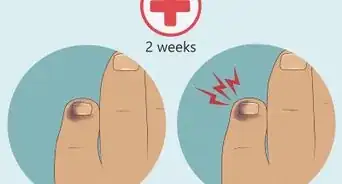
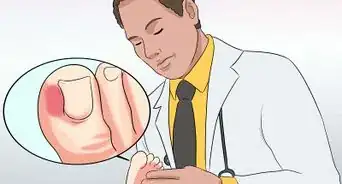
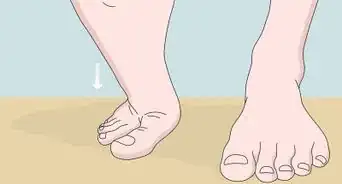
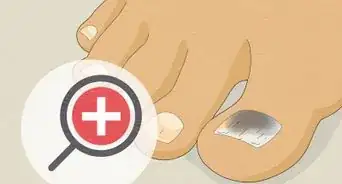




















































Medical Disclaimer
The content of this article is not intended to be a substitute for professional medical advice, examination, diagnosis, or treatment. You should always contact your doctor or other qualified healthcare professional before starting, changing, or stopping any kind of health treatment.
Read More...